Climate Change & Energy Production Notes
Check Out Our Results
OXFORD UNIVERSITY
(QS:3)

IMPERIAL COLLEGE
(QS:6)

CORNELL UNIVERSITY (QS:16)

45/45 (IBDP)
GEORGIA INSTITUTE

43/45 (IBDP)
KELLY SCHOOL
Climate Change & Energy Production
7.1 Energy Choices & Security
7.1.1 Range of Energy Sources
Energy can be generated from both renewable and non-renewable sources. The majority of the world’s fuel comes from non-renewable sources which is unlikely to change by 2030.
7.1.2 Advantages and Disadvantages of Fossil Fuel Consumption:
Advantages | Disadvantages |
|
|
7.1.3 Advantages and Disadvantages of renewable energy sources:
Advantages | Disadvantages |
|
|
7.1.4 Characteristics of Particular Renewable Energy Sources:
Hydroelectric Power: The water turns the propellers which cause rotation in the turbine shaft, which generates electricity in the turbine’s motor. |
|
|
Tidal Power: |
|
|
Solar Energy: |
|
|
Wind Power: |
|
|
Biofuel: |
|
|
Wastes: |
|
|
Geothermal Energy: |
|
|
Nuclear Power: |
|
|
7.1.5 Energy Security
- Is a country’s ability to secure all its energy needs whereas energy insecurity refers to a lack of security over energy sources.
- Energy insecurity can cause and be the result of geopolitical tension.
- For most consumers, a diversified energy mix is the best policy, rather than depending on a single supplier.
7.1.6 Factors affecting the choice of energy generation
- The availability and reliability of supply
- Sustainability of supply
- Scientific and technological development
- Political & Economic factors
- Cultural attitudes
- Environmental factors
7.1.7 Ways to Achieve Greater Efficiency through Energy Conservation
- Smart meters
- Enhanced environmental standards.
- Reduced energy use and emissions of carbon dioxide
- Reduction of waste
- Improved thermal efficiency of walls and windows
- Reduction of heat loss between inner and outer walls
- Energy-efficient domestic appliances
- Improved daylighting by larger windows
Sustainability
The use of resources at such a rate that allows natural regeneration and/ or minimises damage to the environment.
Why Save?
Energy saving is the quickest, most cost- effective way of reducing greenhouse gas emissions. It also reduces the use of scarce resources.
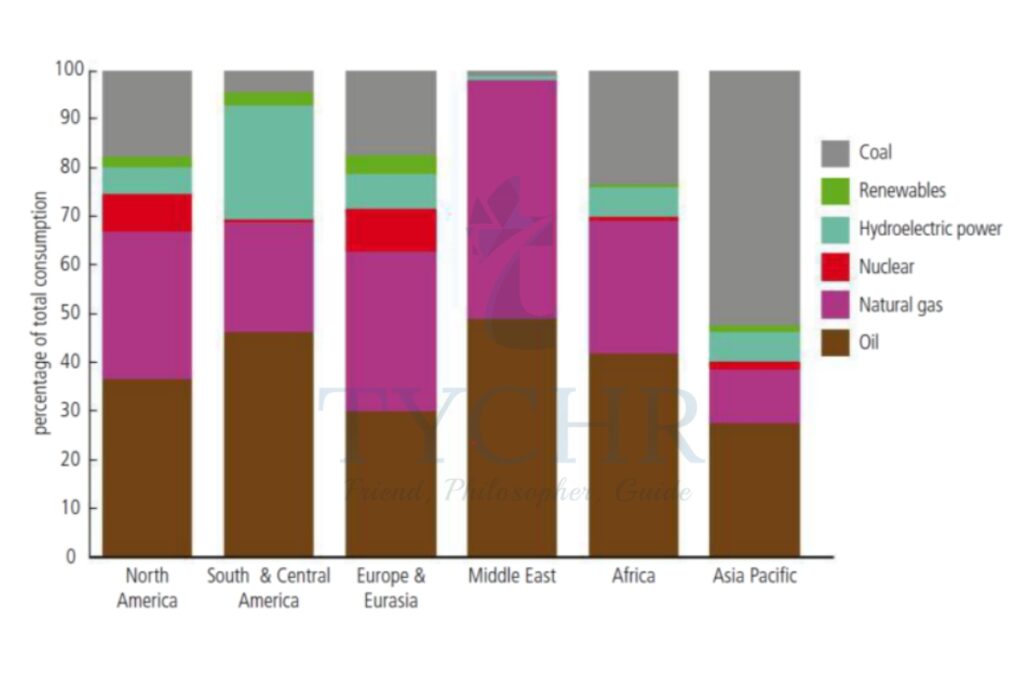
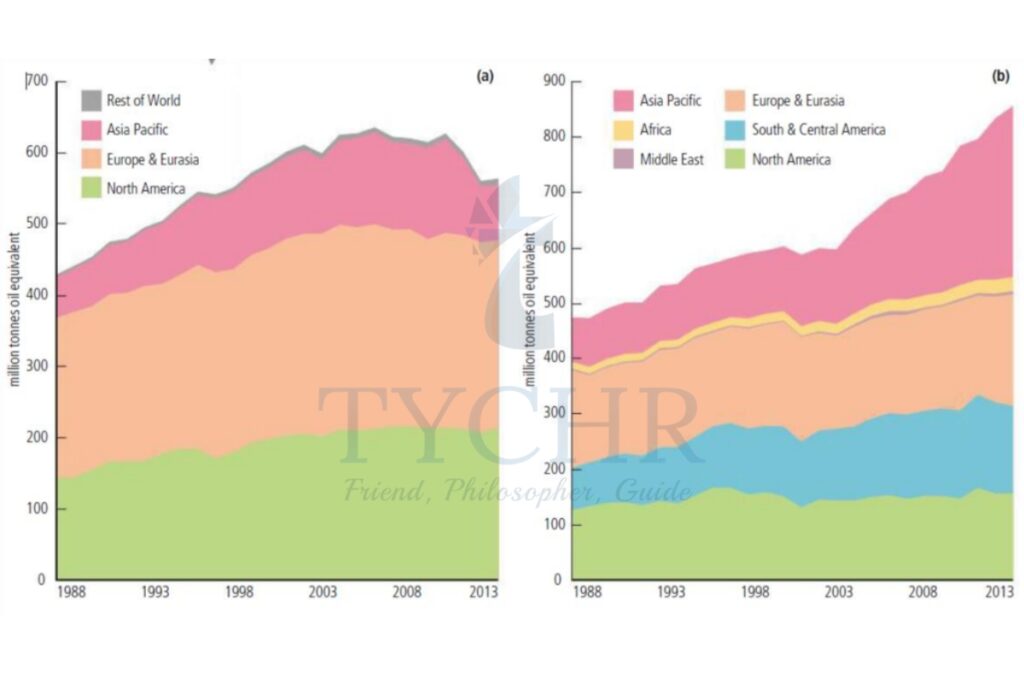
7.2 Climate Change, Causes and Impact
7.2.2 Ocean Circulatory Systems
Warm ocean currents move water away from the equator, whereas cold ocean currents move water away from cold regions towards the equator. The major currents transport enormous bodies of water over significant distances.
- Specific Heat Capacity- Specific heat capacity is the amount of energy it takes to raise the temperature of 1 g of substance by 1 °C. It takes more energy to heat up water than it does to heat land. However, it takes longer for water to lose heat. Hence, land is hotter than the sea by day, but colder than the sea by night.
- Surface Ocean Currents- Surface ocean currents are caused by the influence of prevailing winds blowing across the sea. The dominant pattern of surface ocean currents (known as gyres) is roughly circular. The pattern of these currents is clockwise in the northern hemisphere and anti-clockwise in the southern hemisphere. The effect of surface ocean currents on temperatures depends on whether the current is cold or warm.
7.2.3 Atmospheric Circulatory Systems
- Air Motion- The basic cause of air motion is the unequal heating of Earth’s surface. Variable heating of the
Earth causes variations in pressure and this in turn sets the air in motion. - Pressure Variations- Pressure is measured in millibars (mb) and is represented on maps by isobars, lines of equal pressure. The trend of pressure change is of more importance than the actual reading itself. Decline in pressure indicates wetter weather and rising pressure indicates drier weather.
- General Circulation Models- In 1735, George Hadley described the operation of the Hadley cell to explain atmospheric circulation. He suggested that direct heating of low latitudes forces air to rise by convection, the air then travels towards the poles but sinks at the subtropical anticyclone (high pressure belt). Hadley suggested that similar cells might exist in mid latitudes and high latitudes.
7.2.4 Greenhouse Gases and Human Activities

The quantity of greenhouse gases emitted by any individual country depends on its economy, level of development, and societal expectations. Transport, a lifestyle with expectations of air conditioning, and other high-energy demands at home and work all lead to the high fuel economy seen there. Over the past 100 years, atmospheric concentrations of these gases have risen dramatically.
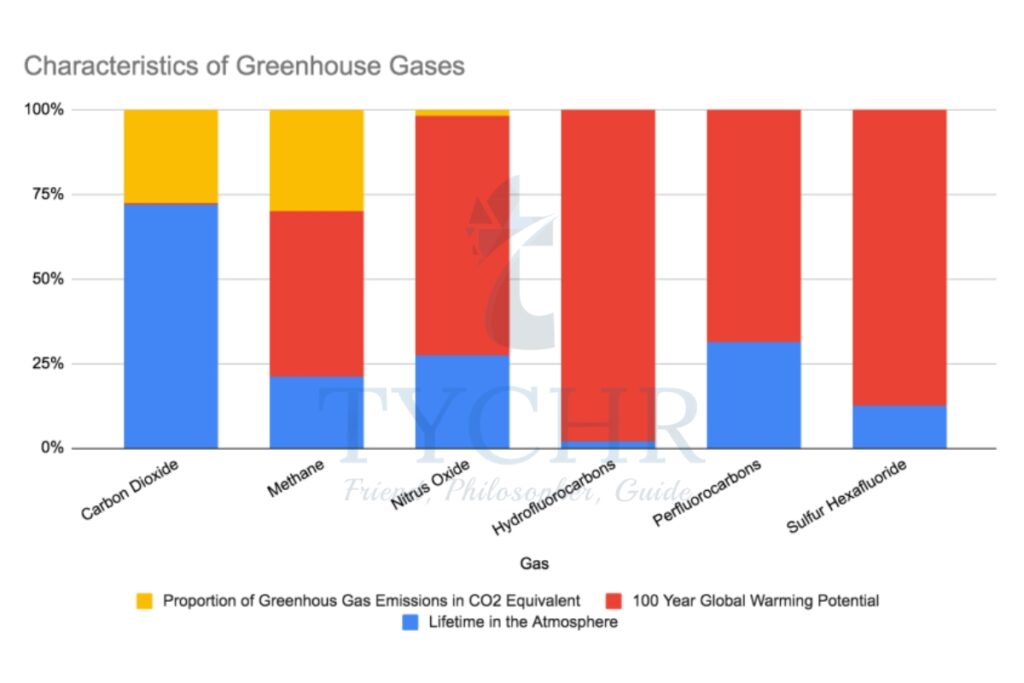
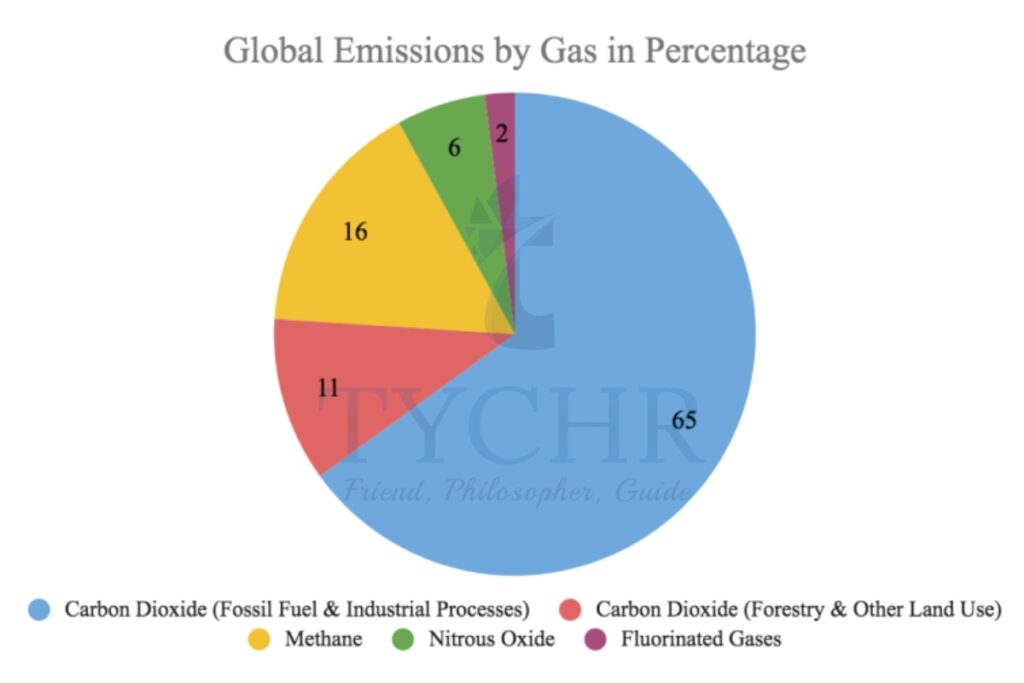
7.2.5 Effects of Global Warming
Feature | Effect or Impact |
Environmental Features | |
Ice & Snow | Melting of polar ice caps and glaciers |
Coastlines | Increase in sea level causing coastal flooding |
Societal Features | |
Water Resources | Severe water shortages and possibly wars over supply; droughts and famines |
Agriculture | May shift towards poles (away from drought areas); change in distribution of crop growing areas; food shortages; drop in crop yield |
Coastal Residential Locations | Relocation due to flooding and storms |
Human Health | Increased disease (e.g. risk of malaria) |
Industries | Tourism, and other non essential industries may be affected |
7.2.6 Feedback and Global Warming
Positive Feedback | Negative Feedback |
May involve greater thawing of permafrost, leading to an escalation in methane levels, which increases the mean global temperature. As methane is a greenhouse gas, it has the potential to increase temperatures, thereby reinforcing the rise in temperature. | May involve increased evaporation in tropical latitudes, leading to increased snowfall on the polar ice caps. The surface of snow and ice is very reflective so the albedo is increased. Increased reflectivity reduces the amount of solar radiation received and so lowers temperatures. |
7.2.7 Climate Sensitivity
Is a measure of how much the Earth’s climate will cool or warm after a change in the climate system, for instance, how much it will warm for doubling in carbon dioxide concentrations.
7.2.8 Uncertainty of Climate Models
These are very complex as they cover the whole of the Earth (and beyond) and try to integrate atmospheric, oceanic, terrestrial, lithospheric, hydrological, and human systems. In addition, the further forward in time scientists try to predict, the less accurate their estimates are.
7.3 Climate change- Mitigation and Adaptation
7.3.1 Mitigation
Mitigation involves reduction and/or stabilisation of greenhouse gas (GHG) emissions and their removal from the atmosphere. It aims to reduce the causes of climate change. Mitigation can be achieved through:
- Reduction of Energy Consumption- Energy consumption could be reduced in many ways, e.g. by using public transport, using locally produced foods, turning off appliances when not in use, becoming vegetarian/vegan, installing better insulation in homes.
- Decarbonization- It refers to a large reduction of carbon dioxide per value of gross world product. Since most of the carbon dioxide comes from burning fossil fuels, a sharp reduction in the use of fossil fuels or a large-scale system to capture and sequester the carbon dioxide is needed. There are three key steps to decarbonization:
- Energy efficiency
- Reducing the emissions of carbon dioxide per megawatt hour of electricity generated
- Fuel shift- from direct use of fossil fuels to electricity based on clean primary energy
- reductions in agricultural methane and nitrogen oxide emissions-¾th of all agricultural land is used for livestock production which is the single biggest source of habitat destruction. The livestock sector is also responsible for 15% of global man made emissions.
- Alternatives to fossil fuels- The use of alternative energy sources would reduce emissions of carbon dioxide. These alternative energy sources include hydroelectric power and solar power. They do not produce carbon dioxide when they are operating although carbon dioxide is released during the construction of the facilities. However, only certain places have the potential to produce alternative energy supplies.
- Geoengineering- Using the sulphate aerosol particles in the air to dim the incoming sunlight and thereby cool the planet to offset the warming effects of carbon dioxide; or placing giant mirrors in space to deflect some of the incoming solar radiation are some radical ideas suggested by scientists.
- Carbon dioxide removal (CDR) techniques
- UN-REDD Programme
- Biomass
- Carbon Capture and Sequestration (CSS)
- Enhancing carbon dioxide absorption
7.3.2 Adaptation

Adaptation refers to efforts to live with the consequences of climate change. Adaptation includes measures such as protecting cities from storm surges and protecting crops from high temperatures and droughts.
7.3.3 Policy Changes
While carbon dioxide emitters do not bear the social costs they cause, society, including future generations, bears the brunt of its high costs. As a result, there is no incentive on the market to switch from fossil fuels to alternatives.
Carbon Taxes | Carbon Trading | Carbon Offset Schemes |
|
|
|
7.3.4 Politics of Carbon Dioxide Mitigation & Adaptation
- Kyoto Protocol
Is an agreement signed by 183 countries in Kyoto, Japan in 1997. The countries aimed for the stabilisation of greenhouse gas emissions at safe levels that would avoid serious climate change. They concurred to cut greenhouse gas emissions by 5% of their 1990 levels by 2012. It is currently the only legally binding international
agreement that seeks to tackle the challenges of global warming. - Paris Agreement
The Paris Agreement, which was signed in 2016 and is a component of the United Nations Framework Convention on Climate Change (UNFCCC), addresses mitigation, adaptation, and financing of greenhouse gas emissions.The key objective is to limit global warming to 2°C compared with pre-industrial levels. It also seeks for zero net greenhouse gas emissions between 2050 and 2100. However, there is neither a mechanism to penalise nations if their targets are not met nor a mechanism to compel a nation to set a specific goal. - Climate Change Intergovernmental Panel.
The international body responsible for evaluating climate change science is the IPCC. It was established by the World Meteorological Organization (WMO) and the United Nations Environment Program (UNEP) to provide regular assessments of climate change, its effects, and potential future threats to policymakers.IPCC evaluations give a logical premise to legislatures at all levels to foster environment related strategies. The report also says that behavioural changes, like eating less meat or changing one’s diet, can help reduce emissions. - National Adaptation Programmes of Action
A NAPA is a plan that an LEDC sends to the UNFCCC to explain how the country thinks it needs to adapt to climate change right away.Completing a NAPA makes LEDCs eligible for project funding from the Global Environment Facility (GEF).

